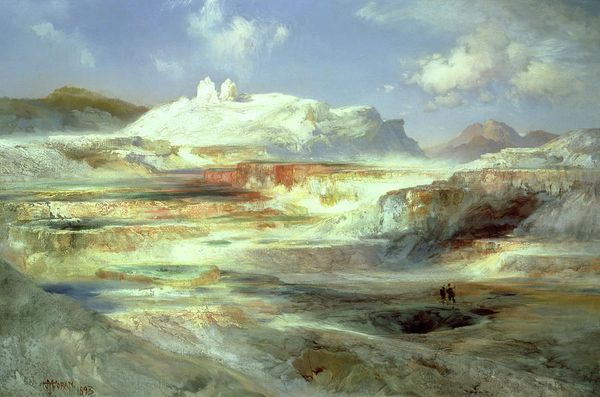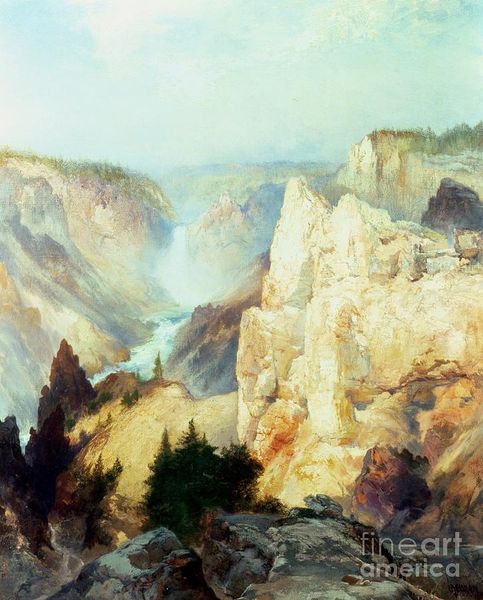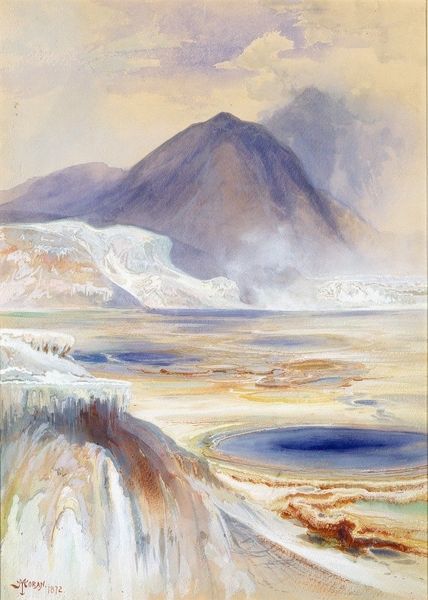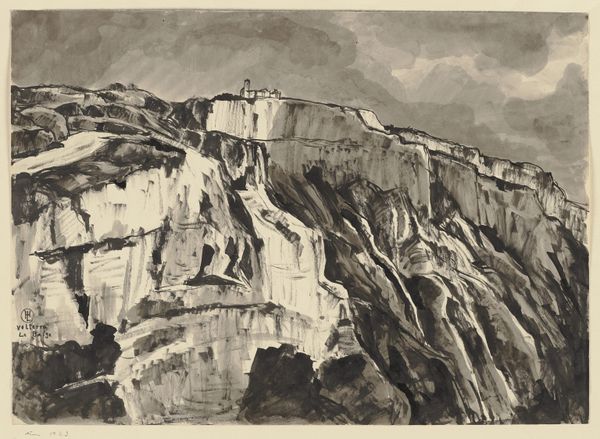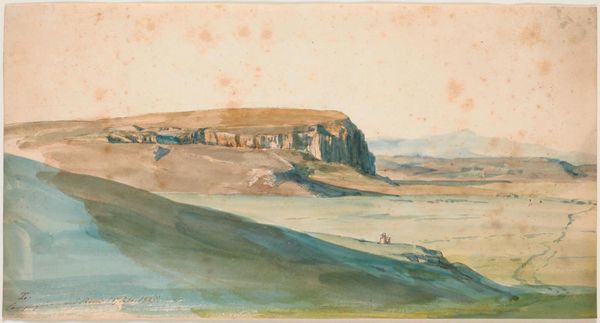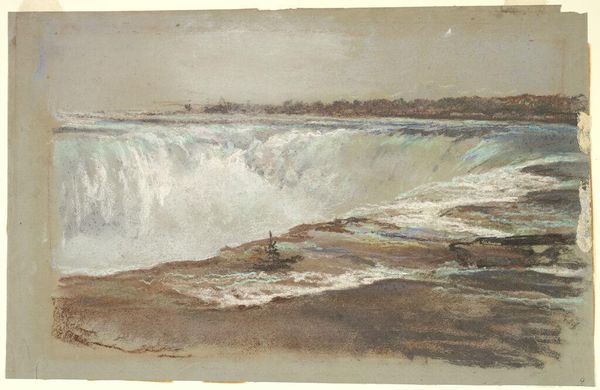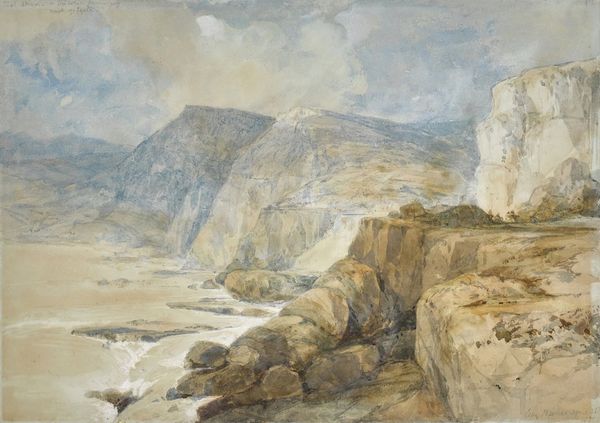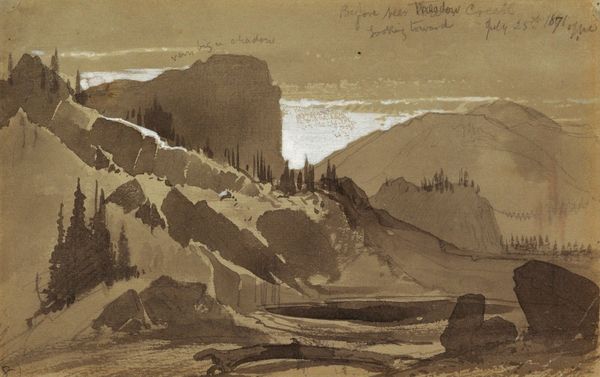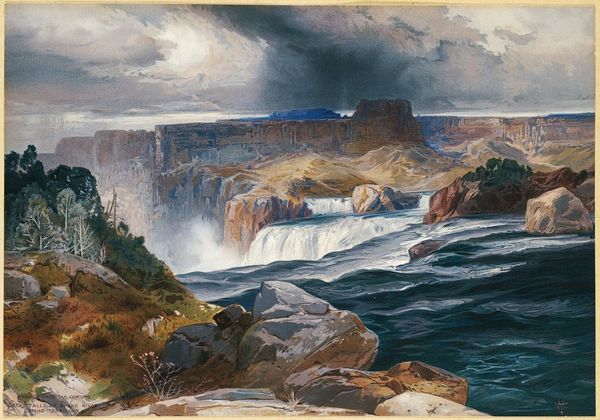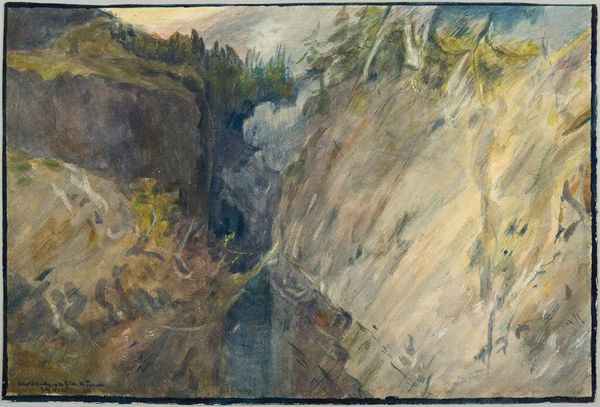
plein-air, watercolor
#
plein-air
#
landscape
#
oil painting
#
watercolor
#
hudson-river-school
#
watercolour illustration
#
watercolor
#
realism
Copyright: Public Domain: Artvee
This is Thomas Moran's watercolor "Hot Springs of Gardiner's River, Yellowstone." Moran was fascinated by the American West, and often depicted its landscapes in his art. In this piece, he captures the unique geological formations of Yellowstone with layers of thin washes. Notice how the paper becomes a crucial element of the work, its whiteness suggesting the mineral deposits left by the hot springs. Watercolors were often seen as preliminary studies rather than finished artworks. They were favored for scientific expeditions and documentation due to their portability and ease of use in the field. Moran used watercolor's fluidity to full effect, creating a sense of light, atmosphere, and the ever-changing qualities of the landscape. The paper's surface interacts with the pigments, creating a luminous effect that captures the sublime beauty of Yellowstone. By considering the materials, processes, and social context, we can appreciate this watercolor not just as a pretty landscape, but as a document of a specific time and place, and a testament to the power of observation and artistic skill.
Comments
No comments
Be the first to comment and join the conversation on the ultimate creative platform.

